SIMPLE – FASTER – CAPABLE
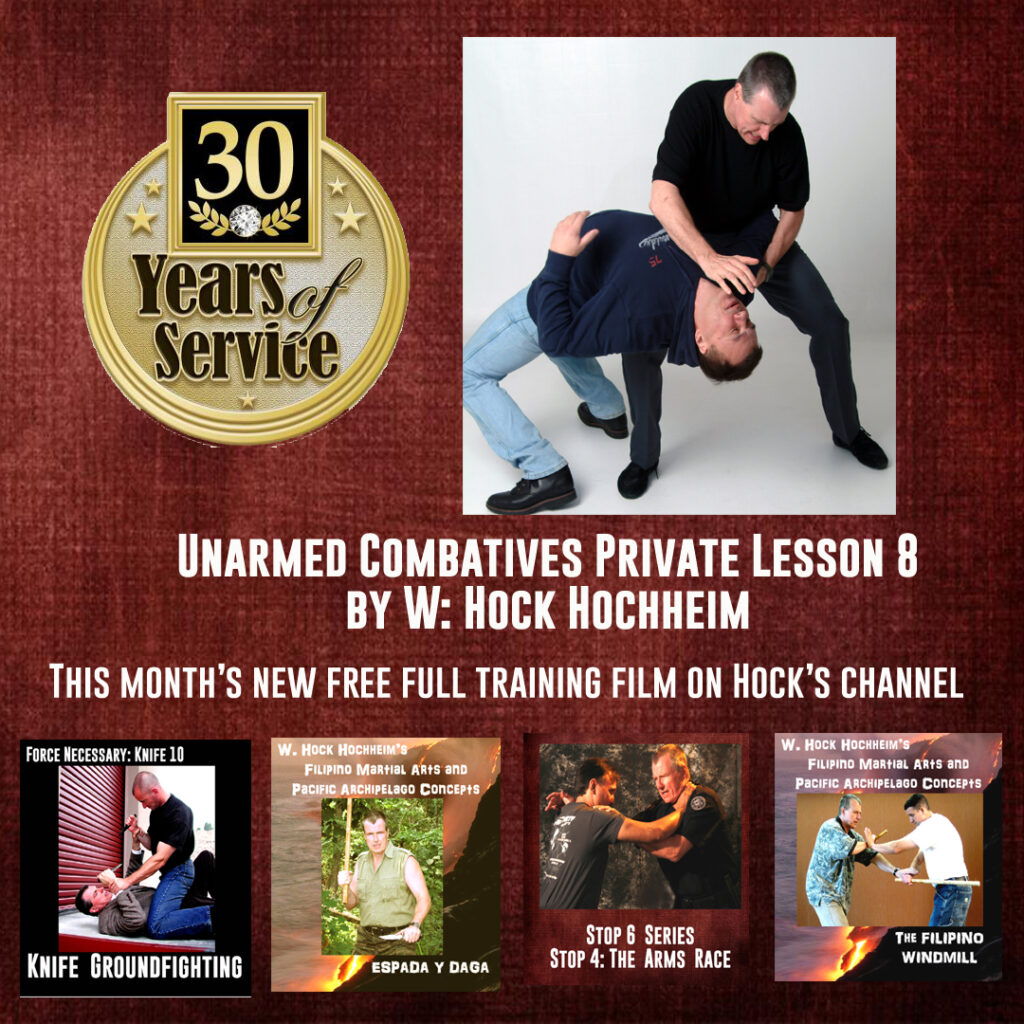
SIMPLE – FASTER – CAPABLE

Question: How do I become a Scientific Fighting Congress (SFC) instructor? Or obtain rank? How does this training work? What are the courses within the SFC?
The SFC is the corporate name above of all this. The year 2025 is the 30th year of our international operation. We have thousands of members in many countries as far as Australia. Under that corporate SFC umbrella are the 7 big programs or courses. All rank is optional. Yoy can just train for knowledge. There is no monthly tithing, franchise fees. First pick a course or courses you are interested in…
My typical seminars are about 12 to 14 hours over a weekend. I only plan on teaching certain themes for about 6 to 8 of these hours. The other hours I select material needed by the attendees. Some camps are geared specifically for rank advancement and those are the best places to go to for advancement. Most seminars are just about various subject matters. Also, of course, your regional instructor, or your favorite non-regional instructor can promote you too, in his or her regular classes, semi-privates or privates.
The Optional Instructor Titles…
Question: Must Instructors Teach Only Force Necessary Material?
NO! Of course not. You are free to do as you wish. Some SFC instructors..
Question: Is there expensive, re-certification or instructor re-certification?
No. It’s free and automatic when you simply attend another annual seminar. If you don’t attend, after a while, unless there are common-sense, extenuating circumstances, you sort of drop-drift off the active rolls and off the webpage active list. I don’t want to bother people with monthly or annual fees. You need your own money!
I do need to see ranking practitioners and instructors about once a year when common-sense-possible, because a common seminar will have a new theme, new materials and new evolutions. We never stop processing and progressing material. So, about once a year you need to swing by and see me if you can. I try to get close to you. No doubt I will travel more than my share to get within striking distance of you.
Re-certification? Ahain, we need to see rank holders and instructors about once every year. Or some reason why we can’t. (I am very flexible.) People listed on our instructor pages on our website, are active certified instructors. There are people not on the list that have attained various ranks to include Black Belt levels ranks in the last 30 years, but for whatever private or professional reasons, they are not recently active within our organization. Maybe they took up golf!? Have kids? Etc. They still possess these rankings, they are just not listed here on the active-duty pages. We are constantly improving and honing the material, as well as checking on the instructors and their progress. If he doesn’t see them for a long period? They simply fall off the active-duty list. Want back on the active list? Just Attend a seminar.
Question: Can instructors promote their people? Yes.
Question: How do SFC Tests Work?
We have been using the “College Approach.” Simply put? You do not have to take our modules in order. You can complete course levels out of order. I am already scheduling seminars for 2025, my 30th year on the road. In some circumstances, I may only return to a city around the world in a year and a half now, not every year. Worse, complicating the mission, I really am consistently asked for rank progressions and instructorships. Squeezing all this in, IN PROMOTIONAL ORDER for each person, is just about impossible to schedule.
Every single thing I teach is within a course we have. Though there are ten levels in each course, the tenth is a big test, so there are 9 levels of study in each course. That’s nine times four. 36 levels. 36 modules. Granted the modules are short and simple, but they take time to do, to teach and get to. Getting to them all, for everyone gets harder and harder each year. In a perfect world, like the perfect college schedule, you would start with “Subject 101” and proceed in perfect order, on through the “Subject 400s.” Ever done that? Who do you know that has? It is next to impossible.
When folks go to college, they do the best they can, getting the courses they need. But when registering, they take the subjects and classes that are open to them at the time, wrestling with both their schedules and the college-scheduled offerings. This means a college student may actually start in class “Subject 105,” rather than “Subject 101” because the 101 class is full. (I actually took all my college senior level business courses first!. Yes! As a night student no one seemed to care. So I took “401, 402- on up.” Took the others later as I could get them.) So, you can achieve out of order.
Complete any three levels? You can become an instructor. Instructors can teach ANY SFC level material, but only promote people in the levels they tested for. Any six levels? Any nine levels? And so on. Another simple way to put this, if on any given Sunday I teach Knife 6 and you complete it successfully? You can get official credit for Knife 6, even though you haven’t finished knife 5. We’ll all catch up with everything you in the end. (Note: The Citizen’s Self Defense League is the first three levels of the FN: Hand course.)
This college approach will facilitate more people to achieve what they deserve this way, given our constricted opportunities.
Some arts and programs have prerequisites. Seen this before? “Must Take Class 301 Before Class 302.” Fortunately, in my practical/tactical course modules, these subjects are not brain surgery or rocket science, nor do they contain difficult katas. They are simply basic, simple things spaced out over time, because not all things can fit in level 1 or “101.” Plus, we expect people will already be working with their local instructors, have the training videos, and also have experience (most folks I see, have experience) in a variety of systems and schools.
So now, simply put? You do not have to take or test for our modules in strict order. You don’t ever have to take a test. You can just train for knowledge. Nice if you would? Best if you would. But like college, you can complete course levels out of order.
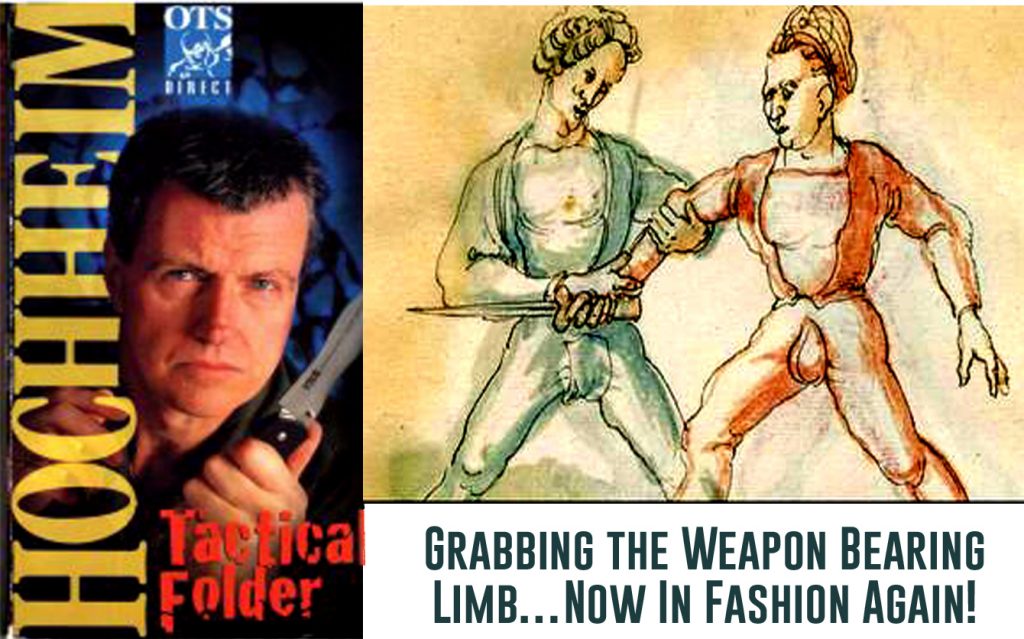
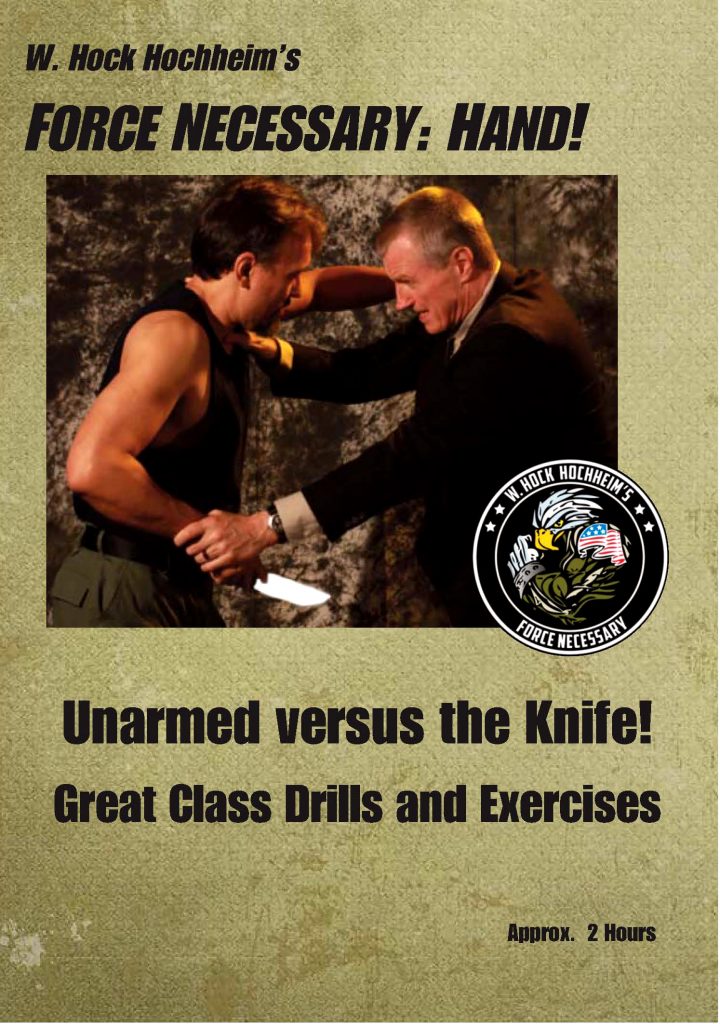
My last two years in the late 90s I wound up back in patrol (I was a real “Adam 12” dinosaur patrolman from the 70s) resurrected back into uniform after some 17-plus years as a detective.
All thanks to some upper-management, “flip-the-applecart” plan. (Lets make the foot-doctors into heart-surgeons and heart-surgeons into foot-doctors.) So, after catching a hitman and filing 12 organized crime cases, I found myself on midnight shift patrol one day, or should I say…night. I had some fun, yes, did some stuff, yes, but it really was a waste of time, grade and experience for me and the flipped others, AND the citizens who rely on expertise.
I had enough military (Army) and quasi-military (policing) in me, to “buckle-up,” “shut up” and go where they sent me. I never once took a promotional exam, (military police or Texas police) wanting to remain in line operations in patrol and investigations. Maybe I should have though? To thwart numerous, deskbound, admin, idiot ideas?
Some of my friends took these tests and remind me they created some ideas for effective change, But me? I was selfish. I wanted to catch criminals, and I spent a blissful 17 years as, what many use to call, a “lone wolf” detective. I was-not, am-not a socially driven public servant by today’s standards, turning and improving agencies into pubic-happy-machines or solving big problems. I just wanted to work cases. Selfish – I confess I used victims as vessels to wrap my hands around the throats of criminals. I mean, I wasn’t rude or dismissive of victims, but I new my mission. Thus, I am-was a dinosaur.
There are numerous stories about why I eventually retired in the Wolfpack Publishing book with their exciting title Kill or Be Killed. Nowadays, I tell all my police and military friends to NOT be like me. Take tests. move up. Build financial security. Build your family. Yours and their future. Don’t remain powerless, bottom-rung, cannon fodder like I was.
_________________________________________
Hock’s email is HockHochheim@forcenecessary.com
Get this ebook, paperback or collector’s hardcover edition, click here
In very generic terms, and with you as the “tosser-thrower-tripper,” in the old-school business of “taking people down,” it would be worthy of mentioning, worthy of thinking about, these two kinds of takedown categories.
There’s one group of methods were you crash down on the ground with the opponent. The other group is when you chunk the guy down and you remain “up,” as in standing, or at least knee-high.
With the first group, there are way more takedown options, including way easier and even sloppy options for when both of you just crash-tackle-fall to the ground together. Actually, almost any idiot can do that, as witnessed in the world of yesterday and today.
With the second “stay-up” there are less options (and more skill) with remaining “up.”
I had to handcuff people most of my adult life when I fought them. In my professional life, on the sidewalks and streets, rocky roads and the tile floors of life, I always tried to be up, or somewhat up, trying for the knee-high or standing results rather than the full-out, ground-wrestling-around results. Once fully down-down, a whole host lof extra, messy things can happen with size, strength, adrenaline, weapons, etc…
I say “try” because sometimes the “toss-er” often falls anyway along with the “toss-ee” from the crazy “asses and elbows” mess that is a “fight.” And if things got rowdy with the “toss-ee,” if and when I got them down, I would try to sit on them, squeezing in on their beltline-pockets (weapons) area, in what was once called “Top-Side Saddle” or “Reverse Top-Side Saddle,” if he was face-down, as in “reverse.” The new, cool kids call it the “mount.”
So at times, I got way down there too, lower than “saddling.” And I had to flat out tackle people due to positional and situational circumstances. In this “ground zero” world there was a short, effective, old school bag of police tricks I was taught, (that including hitting) and I get to show this bag in some seminars when the topic comes up. They do work! And in some cases I had to to choke them out a few times. Nowadays chokes are pretty much taboo in almost all police ops, but okay for civilians if reasonably justified.
It might be worth it, to make a list of the easier, “2-man, crash downs” takedowns and the lessor, harder, “stay-up” takedowns. List and experiment with them. Or, at very least know about the two “ways” and that they exist.
Check all all the materials, click here
A Bigger Picture. In the martial arts world, stick versus stick fighting is most closely associated with the Filipino Martial Arts (FMA). A huge chunk of many FMA systems is indeed about the stick-versus-stick duels-events.
(Using-hitting a stick is an easy and fast training target, as with developing the smart fanning strike shown here – the abaniko. This is not necessarily learning how to stick duel, but rather learning to strike with a stick versus anybody with or without anything with a one-two-there fanning spin.)
To establish my opinion here, I remind that I have spent decades in FMA and decades in very generic combatives. Some people around the world think I am knowledgeable on the subjects, so here goes.
The best FMAs I’ve found spend equal amounts of time in what GM Ernesto Presas defined as “the 5 major areas of play” –
Equal time for the five? I find that some FMAs spend disproportionate amounts of time with sticks. Just look at all the group photos of FMA seminars. Everyone is always holding sticks. Sticks, sticks, sticks. Sticks have become the avatar for FMA. Sure it’s fine for some hobbyists, addictive even, whatever, but I “stick” with the Ernesto Presas “Big 5” format.
I am so often reminded of the classic Ernesto Presas quote, “The cane is the extension of the hand,” suggesting that the hand comes first. Dan Inosanto, so often pegged an a consummate FMA-er always does a plethora of other arts than being stick-centric. Too much stick gets FMA redefined to the “stick-only art.” It ain’t! It’s so much more.
Is this dueling calculus necessary in the real world? Through my decades of policing, training, cases and rather obsessive research, I have personally run across a few impact weapon “duel-related” battles like drunken, softball bat fights at tournaments, or crowbar versus tire iron fights. Things like that.
Stick dueling.Otherwise No. Almost all of us are highly unlikely to get into the proverbial 28” stick versus (coincidentally?) another 28” stick fight in a real world, dueling “street fight.” A study of the stick in common self defense should not-would not be centered around a mirror-image-fighter, stick-versus-stick dueling material. Secondly then, all this stick-trick trapping after longer range contact? No. Not this much. Obsessing with stick dueling and stick trapping should be relegated more into a category of fun, art, sport, hobby or exercise, with only abstract benefits to self defense.
While dueling helps various abstract attributes, there are indeed smarter things to do, to prep for a fight in crime and war. When you remove stick-versus-stick dueling and the calculus of stick trapping from FMA systems, there is so much less to worry about and train for survival. While It is vital to FMA, but even in FMA, there is always other stick things to work on like stick-versus hand, stick-versus-knife, even stick-versus-various, gun threats. Now we are looking like self defenders.
I am asked to teach FMA with some frequency and I do so with a great big smile as it is one of my fun interests, but I always make this quick lecture. As readers know by now, I preach the “mentality, hand, stick, knife, gun, mixed weapon, matrix.” And while my Force Necessary: Stick course must touch a bit on the impact weapon duel – because it has and can happen – in no way do I emphasize it. And a great many folks emphasizing self defense and combatives agree with me on this.
Watch out! These “reality” people are “window-peepers, peeping in your school windows, watching you on Youtube.” quick to judge what you are doing and pigeon-hole you as artsy and off-mission Arnis versus reality. Which leads me to the name-tagging quandary.
For self defense combatives, the trainer and trainee, the work-out partners should still both often hold sticks sometimes. Sometimes? In stick training, it is much easier and faster for both partners to hold sticks for various goals. You do, I do, You do, I do. Ease, target practice and stick blocking to name three.
(Target practice! And you can hit hard. He can learn to block well too In the FMA world other Arnis-Kali things happen.)
So even if you are a self defense, combatives person you might find yourself looking like an FMA-er when both the trainer and trainee hold sticks and appear to be doing “too much stick versus stick” to these short-term window peeper-complainers. But still, dueling is not your real, end mission.
In summary, a few quandary warnings to think about…
Obviously I use an impact weapon emphasis in my Force Necessary: Stick course (details listed below, the self defense, stick matrix,) but I do not overdue the stick versus stick aspect when covering that course. FN Stick looks like this:
When teaching FMA I try to do everything but in equal proportions.
Hock’s email is Hock@HocksCQC.com
_____________________________________________________
Get the Impact Weapon Combatives book, (the new second edition!) Click here

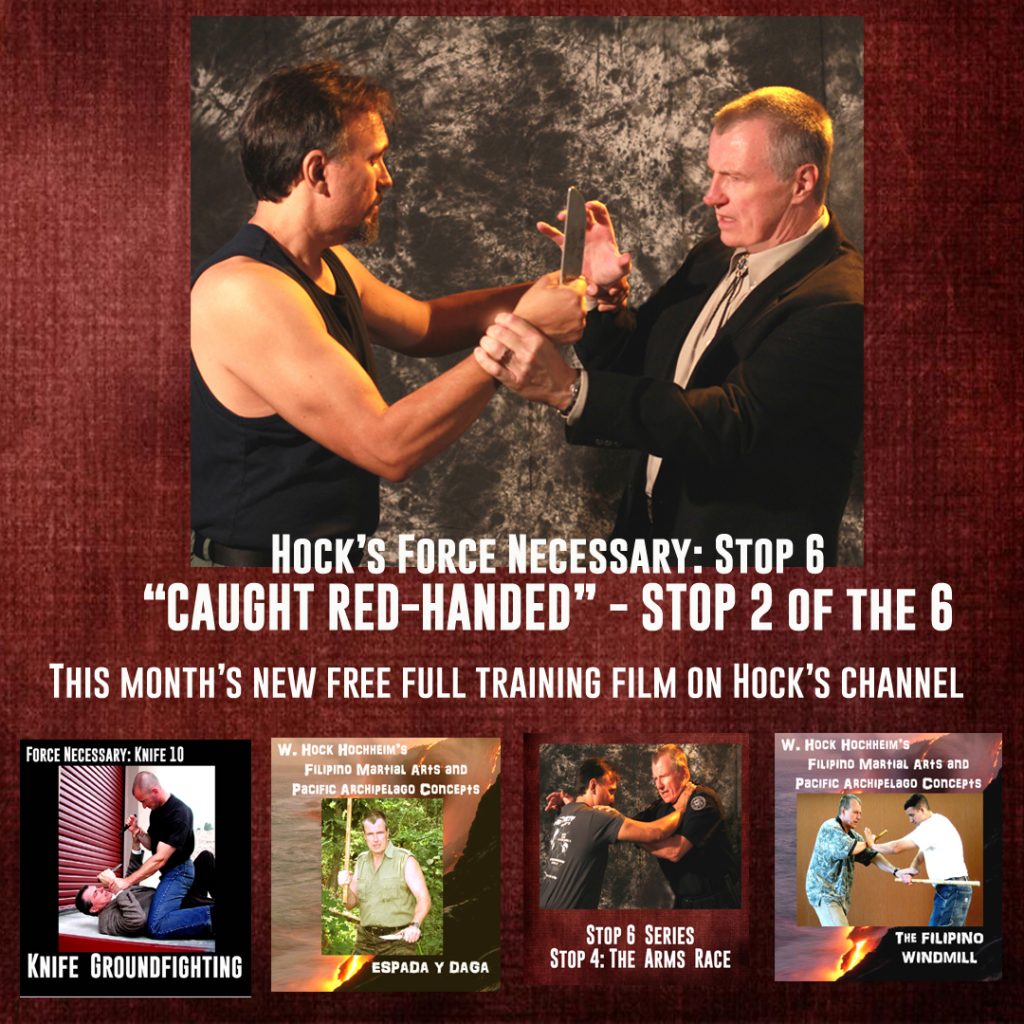
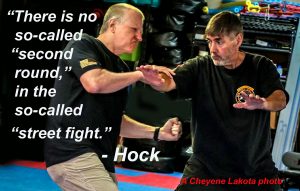
“There is no second round in the street,” might be an old and corny expression for some, but some folks need to hear it once, or once in a while, to get them back on track for what they want, and what they are forced to do in classes and programs.
Attrition is defined as – “the action or process of gradually reducing the strength or effectiveness of someone or something through sustained attack or pressure.” It’s a word used in military battles and war, and here in sport fighting “physical attrition” is a strategy.
In sports, it is indeed the coaches job to map out a strategy to your first or next fight, give you a game plan. You know that in amateur and pro fights, where a history and film exists on your next opponent, these histories are studied and strategies evolve. A properly prepped, fighter, MMA, BJJ, UFC or otherwise needs to walk in with a strategy, a plan. And in this process, the plan is made and you might hear from your coach, “Do this, then do this and this, and the fourth round is yours.” “You…make your move,” Kind of talk. Or ideas about tiring him out in among the battle plan. “First round? Check him out, probe. Probe with the jab. See how he reacts. Second round do ‘this or that’ with the discoveries from your probing. Third round is yours, as you will…”
Coaches say – tire him, move around, also deliver body shots too and kicks too in kickboxing, to weaken and confuse the opponent in round one and round two for the theoretical victory in Round 3.
In one example of body shots, there were numerous successful (and unsuccessful) boxers who spent rounds pounding the upper arms of their opponents so that eventually their guard, through multiple rounds, would eventually drop, their beaten arms down for their eventual, head shots, so that the… ” ______ (fill in the blank) round is yours.”
I think it would be odd for a coach to simply say, “knock him cold with a head shot in the first two seconds. That is all. Now go jog and hit that bag.” Fighters do indeed knock people out quickly, but aren’t they always handed an overall, planning, staging, strategy, etc.? Despite the delaying plans, bingo!
For many fighters, this plan is laid out in the first meeting for training for a specific fight. This fighter then and quite possibly gets this message buried in his head for months, “Third round is mine. Third Round is mine.” Even in the first round, he is fixated on the third round, deep in his head.
This type off delay-progression, advice was advice I had been given for decades by various boxing, kick boxing, and even Thai boxing coaches.
The transition of these delay ideas and advice can get blended over and into, for lack of a better term, “self-defense-street-fighting” courses. Training by short-sighted, self defense course trainers and coaches can, have and will get these borders confused. I was told these off-mission tips at times in several self defense courses that included boxing, kickboxing and Thai methods. For examples:
The “who, what, when, where, how and why” questions arises again.. Briefly, as these questions run deep…
I called these off-mission, missteps – “sport cancers” to be on the lookout for in all transitions from sports to the non-sports world. This is actually quite hard to dissect, especially buried within small steps. Even after 40 years I STILL spot things that I, or we, should not be doing. Enlightened coaches look for these, but I must tell you I don’t find many such enlightened coaches. Many are so immersed in what they do systemically, via their mindset, via hero or system worship or franchise dues, they will not or can’t detect the discrepancies and will not or cannot rebel against them.
“There was no second or third round in the street fight,”…to use a corny phrase. These street fights/arrests I was in and ones I had to break up and later investigate had little time for the experimental probing jabs, trick footwork or secondary blows to wear an opponent down through time, and other “second-third-or-more round,” ring sport, strategies.”
Upon self-examination, be happy with what you do and know why and what you are doing. I want you to be happy in your pursuits.
Physical attrition. We don’t have time for physical attrition. I hate to use the over simplistic term “street fight” because real encounters occur inside and outside of homes and businesses in rural, suburban and urban locations. But these so-called “street fights” were almost always hard, fast, crazy and over quickly. You were bum-rushed, or wild-man-tackled and, or sucker-punched, hit with chairs and lamps, etc…I was attacked once by a man with a big ax. No time for several probing, experimental sport jabs versus the swinging ax man.
Hock’s email is HockHochheim@ForceNecessary.com
^^^^^^^^^^^^^
Get this Training Mission One book here
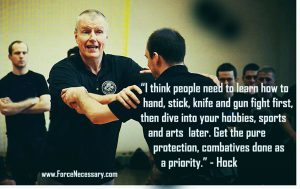
Doing the training process in order that I mention in the above photo and quote has become much easier now than in decades past when a person (such as me) had to slog through 6 or more arts and systems to filter out the real core, generic survival, offensive/defensive material, while adorned in a bevy of different uniforms, rules, hero worship and system worship. Wants and needs. It comes down to a series of “who, what, where, when, how and why” questions.
Wrong place? Wrong people? Wrong mission? In the late 80s, Steven Seagal burst on the scene and broke a guy’s arm in the first few minutes of a movie. I saw “Above the Law” in a theater and knew that very instant that Chuck Norris and Claude Van Damme were done. Chuck went straight to TV and Claude disappeared for awhile to reemerge in B and C movies.
The movie changed and -or motivated a lot of minds. One old friend named Ted for example told me back then, “I wanted to fight like Seagal. I turned my car into the first martial art school I drive by every day and signed up.” But, Ted pulled into a Tae Kwon Do school and very quickly realized he was financially contracted to the wrong place with wrong people, the wrong system for his mission. He had no “who, what, where, when, how and why” going for him. No one there was doing this…this …”Seagal-Fu” as in Aiki-jitsu- Aikido. My point being is that he started something out of an ignorance. What did he want, anyway? And what did he need?
Though I’d been in Parker Kenpo about a year before I went in the army in the early 1970s, the military and police experience really forged my who, what, where, when, how and why mission needs. I needed stuff. Needs that I never saw efficiently fulfilled in one, two, three or more arts. It was a long, hard slog back then to filter. It still isn’t easy really and truth is a daily investigation. But I WANTED what I NEEDED. Not needed to do what I wanted.
Today, Krav Maga is everywhere, though I am not always happy with many versions. It was the genius of Darren Levine who resurrected it into an international business back in the 1990s. He soon lost his “shirt and pants” doing it with insane over-pricing, and he has regrouped a bit since, but you can thank him for your local Krav school, and Krav notoriety, as Krav splintered and splintered and splintered away from him. And, It seems that “combatives” can be found here and there, though again, I am not always happy with the many versions. But, these are groups of folks that have already tried to filter the generics of established systems for you and save you time.
In the same vein, I find the modern-day, MMA of kickboxing, and ground fighting WITH strikes and kicks on the ground, to be diverse, superior and way more on survival mission. No frills. Just winning and what works. Money is at stake! Reputations! It is better than boxing alone. It is better than wrestling alone. But then, still, they have some sport rules and no cheating, no sticks, no knives, no guns!
The overall, international success of Krav, combatives and MMA tells me that a whole lot of people did not, and do not want, to get bogged down in arts, uniforms, abstracts, and that otherwise long slog of off-mission, distracting requirements. I have seen this is the disappearance of, and the slow decline of, old-school, martial arts schools around the world.
Hand. Stick. Knife. Gun. Standing through ground. The laws of your land. Savvy. Awareness. Studies of crime and war. It’s been an evolution I too have been part of, evolving and teaching for 24 years now. A movement. My personal suggestion and advice is one of common sense. Try and get those foundational defense, offense survival stuff first and then move off to more confining hobbies later. Needs first. Then wants.
“Fighting first first, systems second!” Remember that quote? I have used it for 24 years since I emancipated myself from all systems. But, like a college counselor ordering a college kid to take all the college courses in precise order – 101, 102, 103 – and then they simply can’t do that because of filled classes and scheduling, a student takes what he or she can at the time. You too, may have trouble completely doing all unarmed and mixed-weapon combatives first and then arts second. While it is easier these days for you to get right to what you want than in the past, you may have to do this training side-by-side? Generally people are busy with life and can only chip away at this stuff, anyway. Do something rather than nothing. Get off the couch.
Do something. Again, I always say I want people to be happy. Just know where you fit in the big picture. If you told me,
“Yeah Hock, I completely understand what you are saying, but I just want to do traditional ______. I just really love the culture and the country of _______. ”
I am thumbs up with you. Or, one might add to that “love” list,
“Hock, I get it, also just enjoy developing the overall personalities of children.”
Go for it. How about,
“I agree, Hock, but for me, my dream is to be a champ in the UFC.”
May your dream come true! You already know the high regard I have for modern, clean MMA. Unlike the aforementioned Ted, you all get the big picture and can articulate about it. Just know the big picture of “needs and wants.” All martial arts do have abstract benefits. And there are some established, “martial-artsy-named” schools that really try to get survival materials in the curriculum.
So…dance in some kung fus? Throat punch in some combatives? Art? Science? Nuts and bolts? Investigate and figure out what you really need and what you really want to do. Use the “W’s and H” questions. The choices and opportunities are more clear and obvious than ever before.
Finally, a litmus test question – look at it this way. Speaking of college, If you were sending your daughter (or son) off to a big city, college, would you want her to know, so-called “traditional karate?” So-called “Brazilian wrestling?” “Stick versus stick dueling?” Or, so called “unarmed and mixed-weapon, combatives?” What does she really NEED to know, first and foremost? What do you want her to learn, first?
Want what you need?
Need what you want?
*************

Are you an martial innovator, or a martial replicator? After a thought provoking discussion on Facebook, starting with this photo…
…the comments came up that the basics (of fighting arts, or perhaps anything). Are so basic, that how could one possibly innovate the basic-basics. After all, they’re so darn basic!
On the basics, I replied – I am constantly impressed, year after year, how college and pro football trainers invent, and re-invent better ways to enhance the basics of football, the basics of positional football. Open-minded trainers, always looking, always thinking. That’s an open eye to innovation… of the basics.
Can…should the basics be innovated? Yes. But, you first have to find your end goals. Your Mission.
Then…your happiness is achieved! I get it.
Once true mission/goals are established, then the future training can be kicked around, and one thing is to examine the whole approach to those “basics,” the collection of “basics.” The martial arts for example are loaded down with unneeded “basics.” Even when you want to become THAT specific martial artist, you are still, often dragged, mired down into doing unnecessary basics. They should all be examined and after a while, re-examined. It so important to be free of dogma…unless you like dogma? It’s my old “who, what, where, when, how and why question game again.
For example, one dissection of “why do you do this?” A friend of mind was proudly showing a martial arts, ground movement, kata on youtube. Eight guys and gals, all dressed the same, flipping and rolling and stopping a second in a position. It was an elaborate show. He was proud of them. They were proud of themselves. I watched the routine a few times and could see that really, the “stops” were about 7 stretches with dancey’ moves between each one. The dancey’ moves did not conceal the point to me that they were actually stretching and in actuality, the kata itself was about stretching. For a guy like me? I would much rather do the 7 stretches. No dance. One could probably do each stretch longer and deeper, if they just did stretching alone. But, I understand my goal. My mission. Some people like to…dance around. (There are professional dancers!) And some people derive pleasure from it, memorizing it, and performing. Not me, but some do. That’s why I always ask people, to ask themselves, why they do what they do. If their happy, I’m happy. Just be on-mission, on-goal. And know…
But, if the basics are so basic? Can you innovate the basics?
I often see many instructors spend 30 (or more) minutes explaining some painfully, simple movement. Some people love all that. Some don’t. But we don’t need to hear about the DNA of the Missing Link through current mankind to show how to punch someone in the nose. Unless you are a virgin geneticist?
Vetted, core, basic things. Oh, like wind sprints. You might say, “How can you innovate a wind sprint? But wait, wait! Innovating coaches and trainers have developed numerous ways to improve your basic sprinting, and they have with all kinds of core basics.
You can’t always innovate. everything, but you can always think and worry about innovation.
*********************************
Get Hock’s book, Training Mission One, first in a series, click here
Preemptive Strikes and Weapon Brandishing,
or “Officer, The Guy in the Red Hat Started It.”
Preemptive strikes and brandishing. How are these two subjects connected? In an unarmed preemptive strike, you are detecting an impending attack upon yourself. You are making an educated or uneducated guess, smart or not smart, and you slug the other guy first before he slugs you. With brandishing a weapon, you are detecting an impending attack upon yourself, and with an educated guess or not, smart or not, you somehow display your carried weapon with just a peek or a flash of a jacket or vest, or…do a full pull out of a pistol, knife or stick.
In my Stop 1 Showdown-Standoff training module, and in the Level 1 of the hand, stick, knife and gun courses I teach, we cover sudden, unarmed attacks, and a whole lot of weapon draws. Stop 2 through Stop 6 and Levels 2 through 9 cover the mixed weapon, standing though ground, follow-ups. But…so, in the auspices of the Stop 1 boundaries, and in the Levels 1, it is imperative to discuss these two violence initiating subjects. Who does the physical initiation?
Unarmed Preemptive Strikes
The topic of preemptive striking and kicking a pending attacker has always been suggested in martial systems. So many folks think this is the best idea. But there are a few drawbacks. Just a few. “Red hat” drawbacks, I’ll call them. In recent years there have been a lot of YouTube videos of superstar, fad martial artists beating the snot out of a training partner who is just standing still, hands hanging down, before them. Presumably there has been an argument to kick this off? The two are close and our hero springs forward, slaps, pokes, shin kicks and smacks the other guy down in a pile, in one second. The surrounding crowd is thrilled with his amazing skill. So amazed, I hear that he charges some $800 for a two day seminar.
Where’s the “red hat” come in? It just helps define whose-who and whats-what. If the superstar is wearing a red hat, witnesses will report to the police,
“Officer, those two guys were just talking, and the guy with the
red hat hit the other. He started it.”
Handcuffing ensues. Of you. I am not saying that preemptive strikes are a bad thing, they might be wonderful at times. It just can be tricky in the big picture (especially with witnesses around.)
Weapon Brandishing
In simple terms, is just pulling a stick, a knife or a gun always sheer brandishing? When is it? When is it not? Like with an unarmed preemptive strike, what is the pre-draw situation? Federal law defines brandished as:
“…with reference to a dangerous weapon (including a firearm) means that all or part of the weapon was displayed, or the presence of the weapon was otherwise made known to another person, in order to intimidate that person, regardless of whether the weapon was directly visible to that person. Accordingly, although the dangerous weapon does not have to be directly visible, the weapon must be present.” (18 USCS Appx § 1B1.1)”
In Canada, a weapon is referred to in legalese as an “object.” So, one must do a dog-and-pony show on what “object” was used in the situation. Pencil? Screw diver? Tooth pick? Potato chip? Thumb? (Thumb? Actually, few, if any – there’s always one wacky place – regard unarmed tactics as a “weapon,” and the myth of karate-people required to register their hands as lethal weapons is just that – a myth.)
The US Carry webpage says, Brandishing a weapon can be called a lot of different things in different states.
– “Improper Exhibition of a Weapon.”
– “Defensive Display.”
– “Unlawful Display.”
Retired special operations Ben Findly advises, “…‘brandishing’ or ‘improper exhibition’ or ‘defensive display’ or ‘unlawful display’ (or whatever your state and jurisdiction calls it) depends specifically on your state and jurisdiction. Very generally, however, for an operating definition “brandishing” means to display, show, wave, or exhibit the firearm in a manner which another person might find threatening. You can see how widely and differently this can be subjectively interpreted by different “reasonable” individuals and entities. The crime can actually be committed in some states by not even pointing a firearm at someone. In some states it’s a misdemeanor crime and in others a Felony. So, focus, think rationally, know your state’s law, and be careful out there.”
In other words, say you are the one wearing the red hat again. Things go bad and you try to scare off trouble. You pull your jacket back to show a weapon. Or, you pull a weapon to scare off this problem person, what will the witness say?
“Officer, they were just arguing and the man in the red hat pulled out a big ___!”
Fill in the blank. Knife? stick? Pistola? Handcuffs ensue.
A quick review of several state, weapon brandishing laws include words as legal terms like:
– rude, (was the gun-toter obnoxious and rude?)
– careless (was the knife-toter waving it around?)
– angry, (was the stick-toter yelling and red-faced?)
– threatening manner…
…threatening manner? What? For many the whole point of aiming a stick, knife and gun at a brewing bag guy is to be threatening! What then is the line between a smart preemptive strike, a smart weapon show or pull and a crime? How can we make it all become justified self defense? As a cop of three decades, I am alive today because I pulled my gun out a number of times, just before I REALLY needed it. This idea can work.
The remarkable researcher and police vet Massod Ayoob says, “When an unidentifiable citizen clears leather without obvious reason, folks start screaming and calling 9-1-1, and words like “brandishing” start being uttered. Thus, circumstances often constrain the law-abiding armed citizen from drawing until the danger is more apparent, which usually means the danger is greater. Therefore, often having to wait longer to reach for the gun, the armed citizen may actually need quick-draw skills more than the law enforcement officer.
A. Nathan Zeliff, a California attorney reports, “Brandishing – drawing your firearm pursuant to a lawful act of self defense should not be considered “brandishing”. However, if it is determined that you drew your firearm and the facts and circumstances show that you drew or exhibited the firearm in a threatening manner, and that such was not in self defense or in defense of another, then you may face charges of brandishing.”
I am not to sure this brandishing topic comes up all that much? Or not enough. So, here’s some collective words of wisdom on the subject. A collection of advice looks like this:
Witnesses and “pointed-at, victims” can be stupid, bias and vindictive. They have cell phones and big mouths. And, don’t get caught wearing the red hat!
*****************************
Hock’s email is hockhochheim@forcenecessary.com
Get the Stop 6 series to date. Click here –
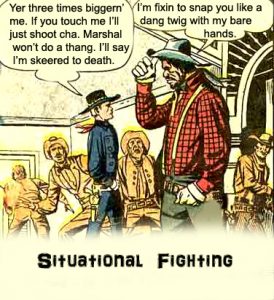
1: Who? Drunk Uncles: “Drunk uncle” is a metaphor that means all your relatives, near and dear, near and far. Kin folk or those close enough to be. It is very common in life to fight people that you do not wish to really hurt. Like your drunk buddy or uncle/relative. In police work we are also expected to fight but not really hurt people unless things get really “out-of-hand” and the situation escalates. But in person-to-person, poke your buddy’s eye out, bite off his ear, hammer-fist his throat or neck, smash his face, break bones, shatter his knee, and then see what happens to you. Usually, often, jail and lawsuits. Lots of money and problems. There is a whole lot of domestic violence out there, and violence on, and from, “who you know” is a big problem. (Remember, there are many intricacies in the complex laws of family violence, lest of all assaults and self defense.)
2: Who? Criminals: Essentially speaking, a stranger, (or for that matter even a friend, uncle or not, officially becomes a criminal when they assault you. You could just lump your uncle into this category once in a while too. But, what crime is being committed? Who, what where, when, how and why? The level of crime, the exact situation takes the exact temperature of your hot, lukewarm or cold response. Crime by the way often starts out with a trick ambush, which is a deep dive study also into the “what, where, when and “how” questions.
3: Who? Enemy soldiers: We know what those are. We usually like to kill them from as far away as possible, but often can’t do that either. Consider the military “rules of engagement.”
Civil law, criminal law and the Geneva Convention, as well as human ethics – look at fighting these three “bad guys” categories differently. Our responses and solutions confronting said “uncles, criminals and enemy soldiers” are very situational and may be:
Of course, not necessarily in that order. All are worth exploring in training through the “who, what, where, when, how and why” questions. All have happened and will happen. I make it a point to cover all of the above in the Force Necessary courses.
Since we are Force Necessary and not Force UNnecessary, I have done sports and arts for decades. I investigate sports and arts. I only borrow and raid from sports and arts for practical applications to solve these “uncles, criminals and enemy soldier” problems. Sports and arts are great laboratories, but it takes constant vigilance to know where to draw the line between art-sports and survival.
*****
Hock’s email is HockHochheim@ForceNecessary.com
Get the book about all this and more, Fightin’ Words, click here
There’s an old story going around about me and a karmabit. The tale goes that during a seminar, lunch break, in the 1990s, a guy walked up to me and showed me his karambit, and I looked at it, opened a nearby window and threw it out the window of a two-story building. This isn’t true. I would never do that to a guy’s property. I can say confidently that not only would I not be so rude as to throw his property out a 2-story window, I would never throw my own karambit out a window either – because I would never own one in the first place to toss it.
You know, the curved-bladed knife that looks like a single animal claw. Some folks think they are God’s gifts to knives. And I am shown, and I get to see, way too many karambits. I see photos and photos of them in the web. God, they look cool. All kinda’ science-fictiony, Klingon-like. Deadly. Tiger-paw looking. In fact, I have come to believe that, they are so scary looking because they remind us of animal claws of critters we are naturally afraid of.
Straight, bent, curved are the choices. The curve of the knife. How curved must one be to qualify? Quite a bit. The more curve, the worse. There are knives on the market that have some bend to them, some just a slight bend, bended/angle. You know one when when you see one.
What did they tell us in elementary school years ago, when writing an essay? “Contrast and compare.” Then what of the Karambit Handicap. It’s a gambit. I hope I can leave this up here on the web as a source for people with these questions for me and questions in general about the true value of the curved knife in the big picture of use, simplicity and survival. I hope I can offer some reasoning and answers about the subject. The following are my personal beliefs and how I have come about them. If you love you some karambits? That’s fine. Enjoy a happy, healthy life. I hope you NEVER have to use one, (or any knife) in any fight.
First, before the hate mail comes in, understand my self-defense-only mission. I don’t collect knives and guns, no more than I would hammers and screwdrivers. But, being in the business of knife instruction, I am often shown karambits and asked questions about karambits. I can honestly proclaim I have never seen a karambit I didn’t think was very, very, cool looking.
Now look, you can cut somebody with a torn-open, tin can top. I also don’t want to be attacked by anything sharp. Broken glass bottle. Nope. A spear? Hell no. A Karambit? Good God, no. But the question remains is, yes, while a tin can will cut you, is it the smartest thing to use? Do we need the Tactical Tin-Can course? No. Think of this on a scale. You must get a knife. Get the best, versatile knife. Like a straight knife that stabs with deep efficiency potential and slashes without getting stuck in bodies and some clothing and can also, easily perform dozens of handy, life-saving and survival chores from chopping wood to cooking.
As a questioner, as a skeptic, never a fan-boy, not naïve, I just don’t fall for worshipping a system-head or a system. It’s a recipe for potential mistakes and failure. If you never question your revered leader, you fail to evolve. So does he and the system he does. Or folks never question gear of the revered. Do you think you must fight with a Klingon knife because you worship the culture, look, feel and history of Klingons? Or are you really looking to carry, fight and survive with the best, most versatile, edged weapon? Are you so mystified by a culture that you can’t see the faults? I know Systema people who like it so much, they start believing in and supporting Communism. I know Kung Fu people who change their religion west to east. Communism and Zen Buddhism should have nothing to do with kicking a guy in the nuts or selecting the best knife. If you want to learn how to fight with hands, sticks, knives and guns? Keep hero-worship OUT of the picture. Keep system worship out of the picture. I think this imperative.
Am I just so untrained and dumb in the wild and wooly ways of the karembit? I frequently get hate mail over this from fan-boys and faddists. Someone will always suggest that I am ignorant and suggest that maybe I should take a real, karambit course from Dijon Scoop and see the wonders and magic of the knife. I was force-fed balisong and karambit material since the late 1980s with multiple training trips to Negros Island and Manila, the Philippines, and many times since there and here since. These knives were part of curriculum we had to learn all the way to Filipino black belt, along with a lot more of the straight knife material. (and well – just forget about the odd, opening process with the balisong. I mean, seriously, why bother? Unless of course you are a weapons-historian-collector-artison of some sort, and I am not.).
As soon as I held a karambit in my hand, it felt wrong, off taget and much of what they asked me to do was clearly unnecessary when compared to all the other straight blade training. As a former Army and Texas cop and an investigator most of my adult life, from arrests, cases and forensic training, I learned the straight knife is far superior and can do just about everything better and simpler than any curved knife, just about any time. The curve of the blade is a handicap. The more the curve, the more the handicap.
I cringe every time I see a seminar attendee with a karambit training knife. I know that this person will have an extra and harder time doing even the most simple, obvious, historically-successful knife moves. My worst-case-scenario knife training course is built to be as simple as possible, as fast and effective, with the obvious and simple tools mostly found, which are the straight blades. Curved blades complicate simplicity. I recall the first time a karambit-teer showed up in a New England seminar in the 1990s. He was a rather famous, Silat guy (great guy, very friendly) showed up with his curved plastic trainer. He had difficulty doing even the most simple, primitive knife things all day long. He couldn’t stab deep which is forensically the most successful, quicker kill method. It was plain to see that when slashing, his curve and tip would get stuck in body parts. Did he know he had to improvise and construct more steps, more “work-arounds,” to get the otherwise, simple job done . Through the years the curved blade trainees still appear in my classes. The curve group often has to pow-wow off in the corner to make a simple thing work, because they are mentally and physically confined from the curved shape of their knife. Their adaptations always involve extra work-arounds and extra training and extra movement to do something otherwise done simpler with the straight blade.
What do I mean by simple, proven moves? One quick, simple example? Studies by the Marines in 1980s – while researching World War II knife tactics in the South Pacific, the USMC study group discovered that the uppercut stab to the groin/intestines, and, or the diaphragm/heart and, or even up inside the jawbone – the common hooking uppercut was a very successful. Successful, but oddly, not really emphasized and in most cases not taught. Yet, Marines instinctively still did them. Naturally. Natural. This research led to the implementation of these very natural moves in training courses. Instinctive. Natural. Simple. Now, can you do this natural, straight knife, saber grip uppercut into these areas with a karambit. You can’t plummet a karmabit as deep and powerful into these vital parts as a saber, straight knife. The karambit will require extra training and still won’t garner the same success. All forensic specialists will list deep stabs as very deadly.
Perhaps the biggest point to me is that the human race has evolved to hunt, grow, prepare food and eat with a straight knife. Ever try to eat a steak with a karambit? Cut and butter bread? I have a friend who likes to tease me on this point and threatens to send me a video of him eating a steak with his curvy karambit. I’ll bet he can! I’ll also bet he can eat a steak with a torn, tin can too. The point is, THE EXTRA WORK INVOLVED! Not that you can or can’t, but rather – what is the smartest, easier tool to use. And we can’t forget, simple kitchen cutlery has reeked international havoc in self-defense, crime and war. In civilized countries over 99% of all knife violence is with simple, STRAIGHT kitchen cutlery. A pretty good success rate for the straight blade.
The Dueling Test. And needless to add, take a guy with a straight, blade knife in a saber grip versus a guy with karambit and let them duel. Who do you think has the advantage? Spar it out. Take two Superflys and spar this straight vs. curved karambit. I can tell you from doing that for decades and organizing/ref experience that the saber grip straight blade has the advantage. Not that dueling is the end-all knife encounter, oh no, but dueling can and does happen. And listen to this – this is telling – even the beloved Superflies still teach and use a whole lot of straight knives too! Most still teach more straight knife than curved knife. Why bother if the Karambit was God’s gift for knife work? Wouldn’t they give up on straight blade material all together?
“Oh but my Dijon! My Dijon does so many arm manipulations-catches with the curve.” Do you think you will really hook and push around so many angry, adrenalized arms with a karambit as Dojon Superfly does in a cooperative flow drill on Youtube? And by the way, a straight knife, saber or reverse grip can push and pull arms around too.
Stress Quick Draws Issues. A comprehensive knife program covers stress quick draws. It seems all modern knives now try to have some pocket catching device that facilitates a quick folder opening. But some don’t. Sometimes people get their folder out,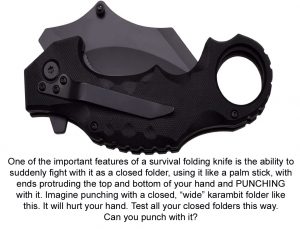
Spinning the Karambit? a simple ring in the handle alone does not a karambit make. I have seen some folks calling a straight knife with a ring in the handle a karambit, just because of the ring. No. The blade has to have a significant, curve to be one, ring or no ring. Now, to what degree of a curve, I can’t precisely say. I think you know one when you see one. The ring is for mostly for retention and…spinning. On spinning, another dubious karambit characteristic or which even the Karambit sellers page warn:
“Karambit spinning is showy, flashy and useless without significant training, practice and understanding of the application. New users should not spin karambits until they’re intimately familiar with their blade, its balance, the way it fits into their hand in various grips and while in motion AND, most importantly, until they’ve received instruction.”
Further, “…many people don’t use the smaller muscles in the hands and it takes time to build them up.”
Confessions from a top karambit salesman! And there you have it from the source. More stuff to do. More muscles to build. More unnecessary stuff to do.
Spinning and chopping off limbs with the Karambit? A friend of mine, unusually consumed by all things “distant” and eastern, oriental and Indonesian, was telling me that a butcher he knew, using a very stout, very big karambit with a sharp outside edge, could flip/spin the curved knife and chop off the limbs of large animals in his shop. It took some practice, but he could. The message for me was that the karambit could, if worked right, with the right momentum, chop off big things in a power spin. CHOP! I just nodded my head. Whatever. “TOOK…SOME…PRACTICE.” But such takes more work, awkward applications, etc. and stouter karambits with a sharp outside edge. If it were a big folder? How do you have a sharp, outside edge like this and carry it? Not in a pocket, but in a sheath…in case you know…you have to lop off a criminal’s hand. I am quite sure the butchers of the world will still prefer regular straight knives and cleavers for more efficient, consistent success. What will be this butcher’s tool of day-to-day preference. The easy one.
Is it skill-with-weapon-alone? Martial artists like to argue that all you need is skill with just about about weapon that will win the day. “Don’t be so picky, Hock! It’s the skill with the weapon that really counts.” And Captain America makes a garbage can cover a deadly weapon! The only problem with that is, none of your pupils are Captain America (or Musashi). And you are not Captain America. And if you are? At 38 years old, you won’t be at 48. “It’s skill with the weapon that counts”…this is a very martial artsy thing to say, and to over-believe. And a lame excuse that could lead to the acceptance of lesser weapons. “I’ll just work harder and forever with this one. After all, it’s not the best, but…but skill. MORE SKILL!
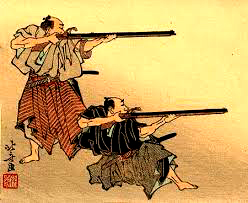
End Users. Sellers of Karambits often have much sales-pitch, yadda-yadda about the cancer-curing perfections/wonders of the curved shape. They often proclaim that just about everyone on the planet already uses, benefits and really needs the really curved knife. Everyone except the real people you see, you know, work with and read about and watch in documentaries, etc. I suggest you challenge every line of the sales pitch because in the end, it is not the selection of the practical.
Work-Mission Versatility?
If they are so perfect and superior for the end-user, why are they not used by all humanity almost of the time? Try giving a farmer, a factory worker or a camper just a karambit and see how long that idea lasts before they trade out for a straight blade. Give a carpet layer a karambit and he will quickly resort back to his classic carpet knife.

Some right-angle bends remind me somewhat of carpet knives. The sharp, 90 degree bend of the carpet knife, its position to the handle, is superior to the more curved karambits, otherwise thousands of carpet layers would have invented karambits or they would all use karambits. They don’t. Some folks, like carpet folks, work projects that require that real, sharp point and a hard, direct bend, for the maximum position of their hand grip for the job. As a detective I have worked some serious, slashing assaults involving common, carpet knife attacks.
Losing the natural, hammer grip stab. There seems to be an inert, intuitive hammer fist application with a reverse grip stab. Think of the power of just a hammer fist. It alone breaks many boards, many ice blocks, many pieces of cement. Imagine that force delivering a straight knife stab! But wait! Now hold a karambit in its reverse grip application, as in the curved end looping out of the bottom of the hand. Gone is all the hammer fist intuition. Gone is the simple, practical, stab and its extra power shot potential. .
Getting Stuck. The hooked blade, like an axe…gets stuck in people and things. The curved point is called a hook, because…it hooks. I see the karambit practitioners simulating cuts with figure 8 patterns and X patterns in the air, or in front of partners. No contact. Do they not realize that with contact, their point embeds into the person and the bones and the clothing, gear, etc.? X pattern over. Figure 8 pattern over. And now they must learn extraction techniques, unique to that knife. Extra stuff to learn. (this is also true with the tomahawk/axe craze. On first impact? THUNK! NO more slap-dash, flowy, dancy, prancy axe moves, just a big-ass axe (or knife) sunk into bone structures.
As a Karambit fan replied, “Oh yeah, not that the Indonesians didn’t use them successfully for hundreds of years… Well, Mr. Fan, what is the difference between “successfully” and something “more successfully?” We have already concluded that any sharp thing cuts. What is the best, sharp thing? Even in the Pacific, I think the karambit was a minority knife among the straight or straighter blades. And indig, Indos used some of them within whole tons of straight and only slightly curved knives and swords too.
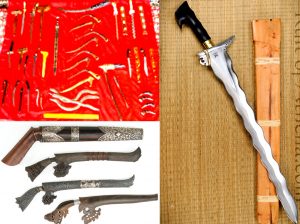
And lastly, need we discuss the legal stigma again of this Klingon-looking knife. It gets legally bad enough to use any knife for any self defense, but this knife, by its very appearance also causes negative, legal prejudices to the police, the prosecutors, the courts and to juries. Think of it in terms of pistols. Would you rather defend yourself with the “Widowmaker” pistol? Or…the “Peacemaker” pistol?” Yes, these…things…count. In a recent self defense courtroom trial, Assistant District Attorney in Texas Aaron Bundoc also said of the defendant’s self defense use of the karambit, “It was not a self-defense tool as Hernandez alleged.” He said “…a Karambit is a combat weapon designed to gut and butcher people.” Like it or not, (as with guns) or knives, the jury listened.
Look, what do I care about people, their fixations, fascinations and hobbies? Why should you care what I think? Some people love history and weapons. Perhaps you are an artisan? Some people like to crack bull whips, while the whip is on fire! Get a hobby! Get a karambit and mess with it. Do all that extra training. Place it on a rotating pedestal in your den. One in each pocket and on a neck chain. Get the t-shirt and ballcap. Follow the Dijon. Smile. Live long and prosper. These are just my personal beliefs and opinions.
For me, a karambit is a handicap to sheer simplicity and ultimate practicality. People are just too damn hypnotized by the shape, culture, history, hero-worship and system-worship. If you really contrast and compare, without bias and fixations, fandom and fads? What do you come up with? Being that we here are Force NECESSARY, and not Force UN-necessary, no karambits for me please. But please do however continue to show me your karambits. They are all very cool looking. And I certainly will not throw them out of any window. Only, you know…figuratively speaking.
______
****************
Email Hock at Hock@hockscqc.com
Get the Knife Book
Over 1,400 plus how-to photos. From standing to the ground, from grip-to-grip, situations to scenarios, the most comprehensive knife book on combatives you will find anywhere, at any time! Training! Exercises! Tactics! How to Train! Plus True Military Knife Combat Stories! 300 pages.